Dog Days, with no dogs invited
By John Gilbert
The dog days of late summer can wear you down with the last blast of heat and humidity, but there are some automotive remedies.
The worst dog days are not at all depressing if experienced from behind the wheel of a convertible. There are a growing list of drop-tops, and if you want to be sure no dogs are allowed, consider as an assortment that includes a BMW, such as the 650i; a Jaguar, particularly the XK-R; and a couple of Chevrolets, whether a Corvette or a Camaro.
With any of these, the evidence is convincing that there is no better way to dispose of a little disposable income to be able to take in the passing scenery than with the windblown rays of sunshine blowing through your hair.
Not too many years ago, convertibles seemed to be vanishing from showrooms and roadways, but they have resolutely moved back into the marketplace in a quite remarkable assortment that allows consumers to pick their price range and find an applicable model. The convertible mix we’re discussing starts with a couple of vehicles such as the 2012 BMW 650i, at $107,000, or a 2011 Jaguar XK-R roadster, at $104,000 — both exotic enough that you won’t see another one on your neighborhood streets every day.
There is a far greater chance of seeing other Corvette convertibles, from vintage models to 2011a, although it will take from $60,000 to $75,000 to
get into a new Grand Sport model. Chevrolet also offers more reasonably priced Camaro convertibles, in both mild (the RS with a V6) at close to $30,000, or wild (the SS with a huge V8), for $40,000-$43,000. Camaro was doing a good job of challenging Ford’s ubiquitous Mustang, and added the convertibles for 2011 to broaden its appeal.
Up North, we donate aout half our driving season to winter or the chill of fall and early spring, so when it’s adequately warm out, we put our tops down at every chance to soak up every available ray of sun. Recently, though, I proved you can overdo it. Driving that 2012 BMW 650i during some 100-degree days in Minneapolis and Saint Paul, I was determined to keep the top down on a short trip, and I paid for it with a little sunburn on my wrist and neck.
Some Northerners park their roadsters for the winter, which is understandable, although others drive them year-round, either out of necessity or simply wanting to continue enjoying the car’s unquestioned sporty flair and agility, even when traction liabilities threaten the predominately rear-wheel-drive layouts.
My own private rules for convertibles, by the way, are that when you put the top down, you must also put the side windows down. Nothing is wimpier than having the top down on a convertible with the side windows rolled up, and it eliminates much of the sportiness of the top-down shape as well. That doesn’t mean you have to suffer when a nice, warm day turns chilly. In my convertible world, you can wear a sweatshirt or jacket, on up to a down parka and gloves, and you can crank up the heater or the seat heater, if need be. But if you have to put up the side windows, then put the top up, too. Read more
Fiat 500 more fun than bowl of jellybeans
By John Gilbert
When you drive into the parking lot at, say, Rudy Luther’s Fiat in Brooklyn Park, you see about an acre of new Fiat 500 subcompacts, lined up in orderly lines so they won’t be mistaken for a gigantic bowlful of jellybeans. All the same shape, and all different colors.
Well, some are the same color, but with 14 colors available, there isn’t a lot of duplication. And an endless list of different graphics and striping packages can individualize any of the three Fiat 500 models. As I gazed down the row of new 500s at Brookdale Fiat, the claim of a half-million possible different color and graphics combinations seemed realistic. If everybody on your block bought a Fiat 500, it would be an amazing coincidence if two of them were identical.
Fiat, of course, would be very happy if everybody on your block bought a 500, which is the modern interpretation of the traditional Fiat Cinquecento. The timing is perfect, with Fiat taking over operation of Chrysler Group, and seizing the opportunity to return to the U.S. market by upgrading all Dodge, Chrysler and Jeep models, and also supplying the small car the Chrysler Group has lacked since abandoning the Neon — during which time small cars have become hugely popular.
I had a chance for a brief road test of various models at the introduction of the 500, and I appreciated a more recent invitation from Doreen Fischer, manager at Brookdale Fiat, located on Brooklyn Boulevard, just north of Interstate 694, and part of the Rudy Luther collection of dealerships. Luther’s also is operating a second Fiat outlet to be positioned in Bloomington, giving Minnesota two of the 130 U.S. dealerships — which Fiat calls “studios.†Fischer said her dealership opened April 1, and sold 21 cars in its first six weeks, long before it could build up the current supply of jellybeans.
The original Fiat Cinquecento hit the streets of Italy in 1957, a tiny little thing with rear-wheel drive that was an Italian answer to Germany’s Volkswagen Beetle. In 2009, after VW had brought back the Beetle and Mini Cooper the new Mini, Fiat decided to reconstruct its iconic small car. Making it more substantial and a bit larger, and with front-wheel drive, Fiat designers wanted to salvage the lines from the original car, notably the hood shape, windshield angle, and its angular slope to the rear.
The personalization of the 500 is an important element, according to Roberto Giolito, Head of Fiat Design, who said: “It is computer aided, but not designed by a computer. It was designed by people.â€
As the new owner of Chrysler Group, Fiat has wanted for years to return to the U.S. market, but never quite got it together. When General Motors and Chrysler needed U.S. government bailout loans to stay solvent a few years ago, the big headlines have been how GM has recovered, and how Ford has thrived without needing government help. Fiat’s takeover of the Chrysler Group — Chrysler, Dodge and Jeep — has been more subtle, but no less important.
Fiat’s redesign of all the interiors and most of the exteriors of all the Chrysler Brand vehicles for 2012 has gained justifiable praise, and Fiat has made an interesting maneuver to solve Chrysler’s lack of a small car with the Fiat 500. Curiously, perhaps, Fiat has insisted that separate that its dealers sell the 500 from separate facilities rather than being parked in a corner of a Dodge or Chrysler dealership. But make no mistake. “We are the small-car brand of Chrysler Group,†said Laura Soave, who is officially identified as the Head of Fiat Brand North America.
From the start, the car was planned to be international, with the United States one of its targets. The U.S. model has several variations from the European car, to meet more stringent safety tests and U.S. driving habits. Alterations include moving the high beams up to the main headlight enclosure, adding a modern automatic transmission, and such amenities as armrests, heated seats, cruise control, and electronic device connectivity, plus acoustic improvements to isolate engine vibration, and a new rear axle for improved ride and comfort.
Chief engineer Fabio DiMuro explained all the changes, and said: “The U.S. car came out so good, we would like to bring these features back to Europe.â€
The 500 comes in three versions for varying lifestyles. The Pop has a 5-speed manual shifter, seven airbags, and a starting price of $15,500. The Sport has a different fascia, firmer suspension settings and seats, 16-inch wheels, a starting price of $17,500, and the availability of a 6-speed automatic transmission with steering wheel paddle shifters, or the 5-sped stick. The Lounge is the top of the line, starting at $19,500, loaded up with all the features that are options on the other models, including the automatic. Some have sunroofs, and a slick-folding convertible is also available.
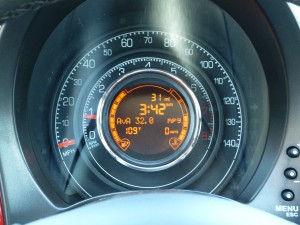
With the tachometer positioned inside the speedometer, also displayed was the July temperature of 109 in Minneapolis.
Fiat is aiming the 500 for an emotional connection with its owners, and if its ultra-cute styling doesn’t grab you, the interior might. A large panel of a smooth, exterior-colored panel cuts an impressive swath from left to right across the dashboard, and the instruments include a cleverly concentric speedometer outlined by the tachometer, with its second readout arrowhead and a digital speed listed in the center. Its surprisingly good performance and handling might surprise someone who hasn’t climbed inside such a well-designed subcompact recently.
The car’s light weight — 2,363 pounds for the stick and 2,434 for the automatic — means the small, 1.4-liter engine’s power pushes the 500 around very well, and amplifies the car’s agility. The actual numbers seem paltry, with only 101 horsepower, peaking at 6,500 RPMs, and 98 foot-pounds of torque, at 4,000 RPMs, but performance is better than the numbers imply and the 500 feels quick around town, and smooth while sustaining 70 or even 75 on a freeway trip. The 500 has enough high-strength steel and design reinforcements to become the first “A†segment car to attain five-star crash test ratings.
The reaction of other drivers on the freeway is interesting, because you can’t tell whether the slower vehicles you just passed have sped up and re-passed because they want a closer look at the Fiat, or whether it’s the usual American tendency to over-react to avoid feeling slighted by a subcompact zipping past so easily.
Some people recall the last Fiats that came into the U.S. There was the 124 roadster and coupe that were fun and fashionable, and the 128 subcompact that had front-wheel drive and performed quite well. For those who don’t think those mid-1960s Fiats were world-beaters, they need only to think back to the ill-handling and poorly coordinated but larger U.S. cars of that era. Since leaving the U.S. scene, Fiat’s expanding reach has taken over ownership of several other brands, including Ferrari and Alfa Romeo. It shares technology and engineering discussions with engineers from all its brands.
A perfect example is the 500‘s “MultiAir†engine, which uses technology that was patented by Fiat after being developed and then discussed with Ferrari’s Formula 1 engineers, and was then fully developed and patented by Fiat engineers. It goes beyond the sophistication of dual-overhead camshaft valve actuation.
MultiAir uses an electro-hydraulic system, with solenoids controlling oil pressure forced from the conventionally operated exhaust valves camshaft, to open and close the intake valves on a fully variable basis, depending on needs initiated by the driver. Instead of being dependent on an intake-valve camshaft, with MultiAir the intake valves can be advanced or delayed in accepting fuel-air mixture, providing a 50-percent increase in low-end torque, while also gaining a 10 percent increase in fuel efficiency and 10 percent reduction in CO2 exhaust emissions, compared to conventional engines.
We attained from 31 to 34 miles per gallon in various driving combinations, while Fiat claims 38 mpg for sustained freeway cruising with the manual transmission.
The future is indeed bright for the Fiat-Chrysler connection, because the MultiAir technique can be applied to any engine. In fact, Fiat has tested the 1.4 engine with the MultiAir system replacing both intake and exhaust valve camshafts, but found that applying the technique to the exhaust side had minimal added improvement, compared to the expense and complexity involved.
“In the 27 years Fiat has been out of the country, an amazing number of people have stories and memories keeping the name alive,†said Soave, during the car’s introductory session. “We are experts at making small cars, and in this era of diversity, we have a global icon with the 500. In America, the old philosophy is bigger is better. But whether it’s telephones or computers, everything keeps getting smaller. So we put all of the features of a large car into a smaller package. It’s not how big your car is, it’s how big your life is.â€
The small car market is expected to expand to 900,000 this year, and the best catch-phrase is that small cars are big these days. Among the dozens of small cars, only a few have a real personality. The Fiat 500 has personality aplenty, along with its Italian flair for style, and its performance and features make it an inexpensive way to drive off into the future.
Pass the jellybeans, please.
2012 Boss 302 pays tribute to 1970 icon
By John Gilbert
There was a little deja vu when the 2012 Ford Mustang Boss 302 first appeared for a one-lap test drive. We were gathered at the spring Midwest Auto Media Association (MAMA) Rally at Road America in Elkhart Lake, Wis., and among the gathered cars for media hot laps was a glistening white Mustang Boss 302. It was particularly glistening because a torrential downpour hammered the area all day. But it didn’t matter. Even driving moderately to keep the high-powered Mustang under strict rein, it was a thrill.
A month later, the very same Mustang — white with its bold black identifying stripes — was delivered to Minneapolis for a week-long test-drive to the North Shore area of Lake Superior, and the weather was fantastic. So was the car.
Ford took its already-strong and still new dual-overhead-camshaft 5.0-liter V8 from the normal Mustang and thoroughly reworked it internally, refining valves, intake and exhaust ports, camshafts, crankshaft, and even the oil pan. Virtually all parts are lighter and stronger for increased capacity against an anticipated increased load. The 5.0 delivers 402 horsepower standard, and 412 in GT form, while the Boss 302 turns out 444 horsepower, with 380 foot-pounds of torque. The added power is easily managed with a 6-speed manual shifter, a short-throw, smooth-shifting gem.
The Boss 302’s price was $42,990, including the heavy-duty MT82 manual transmission, and the Torsen limited-slip differential, plus real Recaro sports bucket seats, in cloth, but it did not come with the widely publicized Sync system that gives almost all new Ford products amazing electronic connectivity. No such voice control, no navigation system, or satellite radio, and I couldn’t coax my iPod to function, either. Apparently it’s assumed that anyone choosing such a strong performer would know where they’re going and wouldn’t appreciate any electronic distractions.
Together with some serious suspension upgrades, including the ability to adjust the shock absorbers for firmer suspension, there are some really special features. My son, Jack, looked underneath the car and noticed two complete sets of dual exhaust pipes.
The secondary pipes cut off near the wheel-wells, and they handle overflowing exhaust, although if the owner wanted to go out to the sort of “track day†opportunities most road-racing tracks now offer, it would be probably be pretty easy to redirect the exhaust for added straight-through power. Such track-day performance also could make best use of the firmer shock settings, and the speed-sensitive electric steering can be set for easy to more resistant wheel feel.
As it stands, the new Boss 302 runs swiftly, handles exceptionally well, stops abruptly, and definitely lives up to its heritage. Good thing, too, because the name Boss 302 demands exceptional performance.
In its never-ending pursuit to keep its pony-car ahead of the herd, Ford has added Mustang models on a nearly annual basis recently, from assorted Shelby and GT models, to specialty models such as the Bullitt, named after the movie of the same name, which included legendary chase scenes in which Steve McQueen raced through the streets of San Francisco. Ford has been able to continue the specific, if subtle, special editions to keep the Mustang current, not missing a beat since its 1964 origin.
But the Boss 302 signals the heritage of truly high-performance Trans-Am racing Mustangs. Built only in 1969 and 1970, the Boss 302s became a company icon, right up there with the LeMans-winning GT-40, and was the closest to a race car Ford ever made in a mainstream vehicle.
Ford’s impressive job building the latest Mustang, with its new DOHC V6, and its all-new 5.0 DOHC V8, made it pretty certain the Boss would connect the dots. There is a lot of the old exhilaration every time you punch the throttle, shift the gears, or zip around a tight curve without wavering from the flat and stable attitude. I’m ready for the red key.
In the late 1960s, pony-cars were a breakthrough for American cars. The “bigger is better†mentality had filled our driveways with large cars that were, pretty much, tanks. Midsize cars were better, but the world of performance cars changed completely with the first Mustang in 1964. It was an immediate classic — lightweight, with a long hood, short rear deck, 2-plus-2 seating, and either a mild but economical 6 or a hot but small V8. Chevrolet followed with the Camaro, Chrysler with the Dodge Challenger and Plymouth Barracuda, Pontiac had the Firebird, and even American Motors got into the act, with the Javeliln. All were similar in size, shape and purpose. And all of them went Trans-Am racing. They were pony-cars, light and agile ponies alongside the midsize horses or full-size plow-horses.
Covering auto racing in those days included the Sports Car Club of America’s Trans-Am series, one of the most exciting, closely contested road-racing series ever concocted, much closer to true street machinery than something like NASCAR is today. Everybody was in it. Roger Penske, and his engineer-driver Mark Donohue, led the Camaro attack, while the Dodge Challenger had Sam Posey behind the wheel, and Plymouth’s Barracuda had Swede Savage driving for Dan Gurney. Bud Moore ran the Mustang team, with the legendary Parnelli Jones and George Follmer as drivers.
All the Mustang needed was a new and more potent engine beyond the outgunned 260 and 289 V8s, and Ford engineers created a masterpiece — a 5-liter, 302 cubic inch V8, with forged steel crankshaft, four-bolt main bearings, solid valve lifters, a deep-set oilpan, special short-skirted pistons and special valves. It was about as good as a pushrod engine could be, advertising 290 “wink-wink†horsepower. It was a 3,000-pound car, and anything with more than one horsepower to 100 pounds called for an insurance hit. So Ford understated its power, despite dyno tests showing the engine closer to 320 or 330 horsepower.
The 1969 Boss 302 was very good, with its quad headlights, narrow grille and three-sided rectangular side stripes, but the 1970 was an excellent update, with a bolder stance, larger single headlights, and the more distinctive side stripe. Parnelli Jones challenged Donohue’s Camaro in 1969, then won the 1970 championship with a remarkable display of driving skill, and an exceptional car.
The 2012 Boss 302 flashed me back to early summer of 1970. I had tested all the pony cars, and we made a family decision to buy one. I liked the Camaro, and the Challenger, and I really liked the looks of the Barracuda, but in objective analysis, the Mustang Boss 302 stood apart, as tight as the Camaro, with the most sophisticated and impressively refined balance of power and agility. It cost a staggering — at the time — $5,000. I hustled down to the Saint Paul Ford plant to help unload the brand new 1970 Ford Boss 302 Mustang from the rail car that brought it from Detroit. The urgency was partly because it was the first and only car I ever ordered factory-direct.
A bigger reason was that my wife, Joan, son Jack, and I, were departing the next day on an epic vacation trip. With a lightweight fold-down tent trailer, our plan was to hook it up to the Boss and drive directly to Toronto, where I would write about the season’s first Can-Am race at Mosport Park. Next, we would drive and camp over the following week, reaching Long Island in time for a Trans-Am race at Bridgehampton. Then, with another week to go, we would drive north into Quebec, camping in the Laurentian Mountains until the weekend, when I would cover the next Can-Am race, at St. Jovite.
It was an awesome trip, with indelible memories for all of us. The Boss 302 was medium blue, with that black stripe angling down behind the front wheel-wells and then shooting straight back, shaped like an enlarged hockey stick. The black stripe was a 3M glass-bead marvel, because when light hit it, it reflected white, bright as a highway sign.
The next year, 1971, Ford redid the Mustang, making it a foot longer, and offered a “Boss 351†with similar revisions to its Cleveland 351 cubic inch engine. It had more power, on paper, and George Montgomery, who built Donnybrooke Speedway in Brainerd as his own high-speed dream, bought a black one, partly because he liked my Boss 302 so much. At a race that year, Montgomery had his public address announcer say that he and I would run a match race during the noon lunch-break. My car needed a tune-up, and I was worried about being outgunned, but not only did my Boss 302 beat his new Boss 351, but I was still in third gear at the end of the quarter-mile.
We owned the car through a couple of accident-induced revisions, and finally sold it 30 years later. Technology had overtaken the original Boss 302’s whistling, high-revving pushrod engine design. The new 5.0-liter Ford engine with dual overhead camshafts, variable valve-timing, and all the other latest technology parts, sets a new standard. And revising it to form the new Boss 302 is a superb example of an All-American pony car, with future-retro styling that honors its 1970 model heritage.
The new car’s exterior design graphics are my only complaint. The base Mustang V6 has large single headlights, while the GT has four headlights, and while they are large, they are positioned one outside and one inside the grille on either side — making the GT look a lot like the 1969 Mustang, and its 1969 Boss 302 spinoff. In 1970, the Boss 302‘s improvements were set off by an exterior featuring larger single headlights, a bold grille, a blacked-out rear end, and the hockey-stick-on-its-side-shape side graphics.
The 2012 Boss 302 has been refined to differentiate from the GT by its large single headlights and grille, and blacked-out rear panel, which makes it look about as different as the 1970 did from the 1969. The side graphics come in various color combinations, all of them striking, and are virtually identical to the horseshoe-on-its-side 1969 Boss, even though the new car is a stunning replica of the 1970 Boss 302. So But the new Boss 302 mimics the 1970’s appearance, with graphics identical to the 1969. Ford needs to bring back one design consultant to oversee such things, old enough to appreciate the heritage of such a true company icon.
The new car will blaze its own contemporary trail. It even comes with two ignition keys, one silver the other red. The silver one makes the car work perfectly; the red one is for those track days or other high-performance desires, because merely inserting it and turning on the Boss 302 also adjusts all the electronic settings for all systems to be on high-performance. The test car I got had only the silver key. Oh, darn. Guess I’ll have to try to get it for another week.
A7 raises Audi standards for style, tech
By John Gilbert
Audi is unquestionably at the top rung of automotive styling as well as technology, and now Audi would like to stand out in U.S. sales, in a manner that might better reflect the popularity the brand enjoys throughout the rest of the world. If that’s an aggressive posture, Audi is deploying a new star player — the dramatically styled A7.
The “four-door coupe” look has been tried by many automakers, but it is a departure for Audi, and at first blush it would appear to be highly successful in execution. And Audi officials are not about to apologize for the departure. Brand Manager Scott Keough said, “The A7 is a boldly designed car, which deserves a boldly designed world,” then he pointed to a new ad campaign, which alerts all: “Let this be a warning to eyesores everywhere.”
Once a distant pursuer of German rivals from Mercedes and BMW, Audi has generally taken the conservative styling route, coupled with advanced technology, as it has evolved to a stronger competitive position in recent years. The look of Audi’s entire fleet sets the company apart, and distinctive styling is an Audi trademark, from its most compact A3 and on through the A4 and A6 to the luxury A8, as well as setting apart its Q7 and Q5 SUVs, and its sports cars, which range from the TT runabouts to the near-exotic R8 mid-engine classic.
The A7, however, sets a new plateau for Audi. It might be the most beautifully designed sedan ever built by Audi, with an aggressive nose that, we’re told, borrows heavily from the upcoming redesigned A6, which will ride on the same platform. But from the side, the A7 has a sweeping, coupe-like slope to the silhouette that tapers down in near-sports car fashion. At $59,250, it is priced just about the same as an A6, but well below the all-aluminum A8 flagship.
When the car was introduced, at the New York Auto Show in April, it looked very good sitting there on a pedestal, appearing to be similar in size to the midsize A6 but with a far more sporty flair. Recently, I’ve had the opportunity to drive and live with an A7 for a week, and it leaves no doubt that as good as it looks, the A7 performs with the hottest cars Audi has turned out.
For over a decade, Audi produced some exceptional small but overachieving engines for its smaller sedans and sporty cars, and whenever the company wanted to make a hot performer, such as the S4, S6 or others, it dabbled in turbocharging but primarily just stuffed the 4.2 liter V8 from the big A8 into smaller platforms with rousing performance results. The A7 represents a different approach, because lurking under that sleek hood is a 3.0-liter V6, bolstered by supercharging to develop 310 horsepower with 325 foot-pounds of torque. That’s easily enough to launch the quattro all-wheel-drive A7 in a truly sporting manner, and the 8-speed Tiptronic transmission guarantees it will continue in that sporty manner with instantaneous and smooth shifts, either up or down.
Audi has frequently used turbocharging to extract more power from, say, its 2.0-liter 4-cylinder, an engine that has widespread use throughout the Audi line and also powering parent Volkswagen’s GTI Golf, GLI Jetta, new Passat, CC sedan and Tiguan SUV. While a turbo takes exhaust flow and redirects it to run a turbine wheel that blows an increased fuel-air flow into the engine, a supercharger is run directly off an accessory drive and blasts air and fuel with direct suddenness into the engine.
The easiest explanation is to climb behind the wheel of any turbocharged Audi and, after being impressed with the building power at your command, then try the A7. Step on it hard, and you are instantly pressed against the seatback, as the car surges forward. You want to pass somebody? Hit the gas and you’ve leaped past.
To my surprise, while I only had a week to appreciate the blasts of power, which made it too tempting to pass up, it was also so efficient that we topped 30 miles per gallon in strictly freeway driving, and 27 or so was easily done overall.
The 3.0 supercharged V6 makes the A7 feel like a smaller and agile sport sedan, responding to throttle and steering inputs and benefitting from a sophisticated suspension system and, of course, Audi’s legendary quattro all-wheel drive system. The A6, according to Audi president Johan de Nysschen, is already outselling the Mercedes E-Class and BMW 5-Series sedans in Europe and Asia. The A6 fits nicely in the midsize segment and the A8 does the same in the luxury class, “and the A7 will appeal to buyers in both segments,” de Nyusschen said.
One of the challenges in the U.S. is that the A4 has been a solid leader for Audi, while its more luxurious upscale nameplates have been flourishing elsewhere. “We want to shift owners upmarket from their A4s,” de Nysschen added, “and while we pride ourselves on the drivetrain, the thing about the A7 that gets everybody is the emotional content of the car. It’s the kind of car that causes people to stop and look. It stands out from the crowd, but fits perfectly in our portfolio.”
In the midsize “C” segment, the A7 brings many of the high-end features from the A8, and it begs to have its technical sophistication described as much as its styling and performance. The styling is set off by what chief designer Ulrich Beierlein described as “two elegant lines, one sweeping up to the roof, and the other to the rear decklid.” The top line angles up near the “C” pillar, at the back of the cabin, to amplify the sloping roof in what is a new angular look for Audi.
“It was like thinking with your pencil, on a clean sheet of paper,” said Beierlein. “I was thinking of a gran turismo coupe, and the two horizontal lines accelerate from front to rear. It creates the elegant look of a coupe, and then uyou realize it’s a four-door coupe.”
The idea of the two crease lines continues inside, where the dashboard has two sweeping lines that angle the instruments to the driver. Mercedes started the idea of a four-door coupe with the previous generation CLS. Since then, Volkswagen successfully tried it with the CC sedan, and Jaguar, Acura and BMW have made stylish attempts to follow that lead. Interesting that as the A7 design was being readied for production, Mercedes renovated the CLS, and the new car is an impressive luxury car, but its side contours and overall silhouette abandon the four-door-coupe look that its predecessor made so striking.
If Audi inherits the leading-edge of that look, the A7 also sets new standards for electronic connectivity. The emotional impact Audi officials talk about is a combination of various technical features and real-world pampering. The fine leather and classy wood interior has an aura of quality and sportiness, sort of like settling into some friend’s high-buck sofa in his just-completed den. Only you’re in charge of this one. A screen rises to display navigation, maps, all sorts of information, and a heads-up display superimposed on the windshield just below your line of vision provides easy access to speed, fuel and other necessary information.
The MMI system offers touchpad controls, and the navigation is arranged through a partnership with Google Earth, with Wikipedia, weather, travel, and fuel prices all provided, as well as news headlines. In partnership with T-Mobile, the A7 becomes a rolling WiFi hotspot as well. Ford jumped ahead of everybody with its connectivity with Microsoft, Sony and others for its “Sync” system, but the competitors caught on quickly and are working their own arrangements.
For driver assistance, an infrared camera is used to create a night vision ability to see pedestrians ahead on a dark roadway, and Ultrasonic front sensors help the driver’s awareness of driveway obstacles and parking space room.
Some of the tech stuff fits well with what has become an Audi design trademark, such as the LED underline for the headlights, which are popular as daytime running lights, and the A7 goes a step further, bringing over the full-LED headlights of the A8.
The solid feel of the luxury A8 also permeates the A7 driving experience. Back in 1994, Audi revised the A8 into an all-aluminum masterpiece, with its aluminum body, platform, engine, suspension parts, and V8 engine, it was built like a jet aircraft, hundreds of pounds lighter than the same car would have been in steel, even with the added weight of quattro. The A7 uses a lot of high-strength aluminum, blended with steel, and when you slam the door, you definitely get the feeling of solidity.
With the torque fluctuating among all four wheels via quattro, the car starts out feeling more securely planted. A suspension system that combines a five-link front with trapezoidal-link rear, and designed to separate the shock absorbers from the suspension, make it feel even more stable, but never harsh while it holds its flat attitude in cornering. Electromechanical power steering is precise, and offers more feel than most electric power-steering units. It also saves 35 pounds of weight compared to a normal mechanical steering setup.
The A7 seems perfectly timed as well as well positioned to bolster Audi’s popularity. Audi vehicles ranked as seventh on the list of cross-shopped luxury sedans in 2006, and now they are No. 2 in the luxury segment. In recent months, Audi has increased sales at the rate that has doubled its market share.
All part of the plan, said brand manager Keough. “Audis have always seemed to be quiet, intellectual, and somewhat unknown,” he said. “If we want to be the best, we must also become ‘known.’Â People purchase luxury items to get something better than the normal, and the same holds true for luxury cars.”
Audis always have set standards that are a little bit different from the norm, and the new A7 could be a lightning rod to carry that concept to new heights.
Honda winners include new Civic, Indy 500
By John Gilbert
The end of April was a good time to launch the all-new, ninth-generation 2012 Honda Civic, although the end of May might have been even better. The end of May is time for the Indianapolis 500, which gathers an annual turnout of up to 400,000 spectators to the Indianapolis Motor Speedway, and millions more worldwide television viewers.
The 2011 Indianapolis 500 is the 100th running of the classic oval-track race, and while single-seat, open-wheel missiles traveling 227-mile-per-hour laps around the 2.5-mile track may seem distant to something as basic as a new compact car, the parallel is perfect. A good bet to be the top-selling compact car for the coming year would be the Civic. An even better bet to win the Indy 500 would be to pick — Honda.
That one is a cinch, because all 33 entries in the Indy 500 will be powered by Honda engines. Every single one. It is a testimony to Honda’s engineering and technology that no other company can compete with Honda in the world’s fastest race. Race reporters seem to take Honda’s participation for granted, and very few other people — including in the automotive media — seem to be aware how totally Honda dominates the Indy Car race scene. For decades, Honda’s technical superiority is only exceeded by the company’s inability to promote its superiority. Maybe that’s why nobody made the connection to trumpet the combined facts of Honda’s success in a race in which durability and efficiency are as important as speed, while introducing the Civic, the real-world icon of Honda’s applied engineering efficiency.
Unlike Honda’s monopoly at Indy, the Civic faces stiff competition, the stiffest ever in the subcompact segment since the Civic was introduced to the U.S. as a 1973 model. Traditional rivals, such as the Toyota Corolla, Nissan Sentra, and Mitsubishi Lancer, have been joined by the Mazda3 and in 2011 by a new Hyundai Elantra, Chevrolet Cruze, and Ford’s new Focus and even the smaller Fiesta.
Nonetheless, the Civic seems pretty well set to be top seller in the segment. The styling remains on the leading edge outside, and is outstanding inside, with driver’s instruments and ergonomics that are a model for the industry. The seats are good and supportive, and rise to excellent in the sporty Si version. The shape of the car enhances visability down the steeply raked hood in all models, and while looking ahead, you find it easy to also see a large digital speed readout, on a strip of electronic instrumentation just above the thick and comfortably grasped steering wheel. Look above the wheel for your speed, and looking through the wheel gives you the large tachometer and other instruments, plus a new information panel to the right that can be changed to various preferences.
It’s all very race-car like, reminding us of going back to the 1990 era, when Honda dominated Formula 1 Grand Prix racing in the hands of the late Ayrton Senna. In Formula 1, or Indianapolis racing, a driver doesn’t have a lot of time to be studying instruments, so a glance at a digital tach or speedometer must suffice. It was back then that Honda adapted its technical expertise from Formula 1 onto its production models, including a generation of Civics that ran from 1991-1995. With variable valve-timing, double-wishbone suspension, and all-wheel disc brakes, the Civic of that generation stood as the best until the 2006 model rolled out. If you get on CarSoup and find a clean 1991-95 Civic EX, it would be a perfect second family car or an offspring’s first car, regardless of miles.
No other car compares to the array of five or six different models offered by the Civic. They range from the DX that starts at $15,605 ($16,405 for the automatic version), to the LX at $17,655/$18,455, the EX at $19,705/$20,505, with the top-level version EX with navigation and leather interior for $23,455. A specially-modified HF model, tweaked for higher mileage, is priced at $19,455, and attains EPA highway estimates of 41 mpg, compared to 39 for the rest of the fleet’s 1.8-liter figures. In
addition, a sportier high-performance Si model is again offered, ranging from $22,205 to $23,905, depending on whether you choose a coupe or sedan. The Si has a larger engine, and a 6-speed stick rather than the 5-speed offered in other coupes and sedans. Those stick shifts are smooth and precise in feel and engagement.
The Civic Hybrid is upgraded considerably, switching from a nickel-metal hydride battery pack to lithium-ion, which is more compact in size and far more efficient in developing and holding electrical power. Paired with the 1.5-liter engine from the smaller Fit, the added boost brings the horsepower up to a mere 110, with 127 foot-pounds of torque, which equates to more torque at fewer RPMs. Spread through a continuously-variable transmission, the car moves with adequate power, and it has improved EPA estimates of 44 miles per gallon, whether city or highway. A Civic Hybrid base price is $24,050, and with navigation and leather, can rise to $26,750.
If that’s not enough, a natural gas version of the Civic will be coming as a production model this fall.
Design of the new Civic is not an enormous departure from the current model, which made a total and stunning design makeover and won the 2006 North American Car of the Year award for design, interior space, performance, price, fuel economy, and diversity of models. The new car has a different look from the front, taking on some of the Insight’s lower grille appearance, and it rounds off the current model’s attractive wedginess into a more rounded shape. Overall length remains the same, while the wheelbase is shortened by a couple of inches, which helps agility a bit and helps interior room quite a bit. The interior remains creatively arranged, with a dashboard that combines a personal cockpit-style for the driver, and falls away gracefully to give the front passenger surprising spaciousness.
At the car’s introduction, in Washington, D.C., we drove from our Georgetown hotel out to FedEx Field, the Redskins NFL stadium, in a loaded EX-L model, then tried out the rest of the fleet. A steady rain finally let up so we could try a couple of cone-lined, parking-lot courses. A couple of Si Coupes proved their potency and handling there. The larger 2.4-liter four-cylinder, its 16 valves driven by dual overhead-camshafts, revs freely and is well-matched to its 6-speed manual transmission. Upgraded suspension settings and larger 17-inch wheels give the Si firmer and more stable cornering capabilities, and further put to rest the common misconception that front-wheel-drive cars aren’t as fun to fling around a track as rear-drivers. In fact, on the well-moistened autocross course, a rear-drive car would have left the choice of letting up or spinning out in places where you could hammer the throttle and simply steer the Si around the curve. The Si adds distinctive sound from the exhaust tuning, and improves on the already good Civic seats with added side bolsters in the cushion and backrest.
The Si’s 201 horsepower peak at 7,000 RPMs and 170 foot-pounds of torque at 4,300 revs, up from the 140 horses at 6,500 and 128 foot-pounds at 4,300 for the normal 1.8 liter models. However, at 2.4 liters, the much larger engine drops Si fuel economy to 22 city/31 highway from the normal Civic’s 28 city/39 highway.
The 1.8-liter four, with a single overhead cam smoothly operating four valves per cylinder, remains the Civic mainstay, except for the Si and Hybrid. On a milder handling circuit, the Civic felt predictable, although it leaned a lot more in sharper curves than the Si, which was to be expected. Honda parked a new Hyundai Elantra nearby for comparison purposes, and I must say the Korean competitor had good power and actually seemed to lean less in hard cornering.
A Civic Hybrid mileage test on normal roads sent me out with James Bell, a good friend from Los Angeles, as codriver. The roadways leaving FedEx Field are as complicated as the folks downtown trying to solve the federal budget. No matter. We had zeroed the odometer and kept driving, up and down some suburban roadways until we reached the specified mileage. My fuel economy was 44.1, which I thought was OK, but a bit disappointing, because I light-footed it all the way. James drove similarly and attained 53.7 miles per gallon — an excellent reading that was third best of all. An engineer explained the discrepancy as the battery being depleted when we first got in the car, and my session recharged the battery pack, which provided more free power and thus better fuel economy during my partner’s run.
The new Civic has been improved by increasing the amount of high-strength steel to 55 percent, making the car lighter yet stronger, with a 10-percent increase in torsional rigidity. More safety technology helps the driver handle situations better. And some high-tech additions enhance that safety. Motion-Adaptive EPS coordinates with the standard antilock brakes and traction and stability controls, as well as with electric power steering to act as soon as the computer detects instability, to improve directional stability in cornering. Problems in curves come down to oversteer or understeer, and are worsened in slippery situations. Turning the wheel too much for the curve (oversteer) is detected and braking force is applied to the outside wheels, helping the driver stay on the proper trajectory. Not turning the wheel enough for a curve (understeer) is similarly offset with the Civic system suppressing engine torque to the inside wheel while also braking the inside wheels to help the driver negotiate the curve.
With such technology, and having models with capabilities ranging from the Hybrid’s real-world 50-plus mpg, to the speed, quickness and agility of the Si, and satisfactory everyday performance out of the other models in between, the Civic seems primed to hold its place atop the compact segment.
The Civic, be assured, is better than the puzzling advertising campaign from RPA, Honda’s ad agency for three decades. Television ads lacked anything resembling cleverness for the current 2011 models, but they’ve hit bottom now. First, showing ghoulish zombies and furry critters eager to drive the new Civic is supposed to indicate that you should join right in with those zombies and animated creatures in desiring a Civic. Another new campaign features the catch-phrase “To Each Their Own.” The proper phrase is “to each his own,” where “his” is accepted for gender-neutral coverage of all humanity, but RPA apparently has decided that striving for political and gender correctness overrides the need for grammatical and proper English usage.
At the post-introduction press questioning, there was some fear that the car itself could falter to meet the low-level ad scheme. Someone asked why there was only a 5-speed stick and 5-speed automatic. Honda officials said that their market research indicated that buyers didn’t care. One engineer said that combining optimum fuel economy and value, the technology to go to a 6-speed wasn’t necessary. Furthermore, there are no steering wheel paddles for manually controlling the automatic, to which the answer was that market research showed buyers didn’t use paddles. As for the stick, the engineer said that they worked hard to get the gear ratios correct to balance fuel economy and driveability.
If there had been a gong, it would have sounded right then — three times, just for the perceived value of the competition. The new Elantra offers a 6-speed in stick and automatic, the Focus and Fiesta automatics are not only 6-speed but are direct-sequential gearboxes as well, and even the Cruze offers a choice of 6-speed stick or 6-speed automatic. The decision to stay with 5-speeds for both manual and automatic leaves the Civic with last-generation technology. Also, the Elantra, the Cruze, the Mazda3 and others offer manual gates or paddles on their automatics, and whether buyers use them or not, by lacking such manual control the Civic falls short again.
Honda’s suspension engineers always have been outstanding, based on how the Civic and other Hondas handle. The independent suspension is good, and the new Civic has MacPherson struts up front and multilink geometry at the rear, both reinforced by stabilizer bars. It does the job, but as I felt the EX model lean in cornering, I couldn’t help but recall my favorite 1991-95 Civic EXes that had, standard, double-wishbone suspension on all four corners. It was right off the race car technology, and while it was expensive, it also was superb — part of what convinced me of Honda’s superior technology.
Those 1991-94 Civic EXes also had 4-wheel disc brakes, standard, and now Honda tries to suggest that using rear drum brakes with the front discs on the DX, LX, HF, Hybrid, and the natural gas models is justified. Only the Si and EX models get 4-wheel discs. I anticipate technical advancements from Honda, and such decontenting is not what I expect from my technical leader.
In addition, claiming an all-new engine gives he Si more horsepower is a bit misleading. The 2.4 engine has been used in Hondas for years. I know well of a 1994 Prelude VTEC with that engine, and it more recently powers the larger Accord sedans. Stuffing a larger-displacement engine into a smaller car seems more General Motors than Honda, which has built its reputation on over-achieving technology from smaller engines to run with larger competition. With nearly a 25 percent increase in displacement over the current 2.0-liter four, adding only 4 horsepower wouldn’t make me eager to give up that high-revving jewel of a 2.0.
The pluses far outweigh any such minuses, particularly from the ad agency’s phrase “To Each Their Own.” I thought maybe I was being too critical about it until the New York Auto Show, when Honda executive vice president John Mandel, reading a teleprompter to avoid overlooking any pertinent facts, finished his presentation by saying: “…To Each His Own.” When asked if the teleprompter actually said “his” or “their,” Mandel laughed and refused to say. He did, however, point out that his wife is an English teacher.
It was reassuring to know that literate people can rise above bad advertising. It would also be reassuring to know that Honda technology can rise above such modern twists as using market research to rationalize decontenting. Now Honda has to find a way to prevent its semi-literate catch-phrase from sending English teachers all over the country to one of the Civic’s hot, new competitors. That specific repercussion might be a sure-thing bet. Although not as certain as that the Indianapolis 500 winner will drive to the finish line in a Honda.


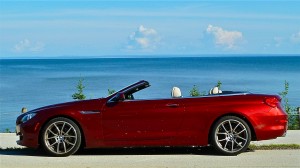
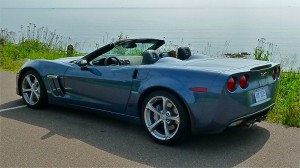
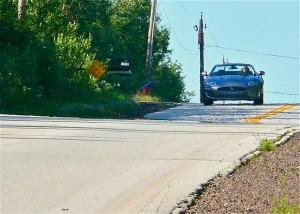
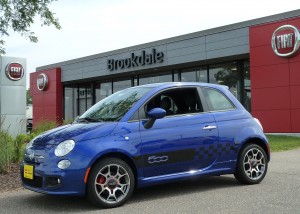
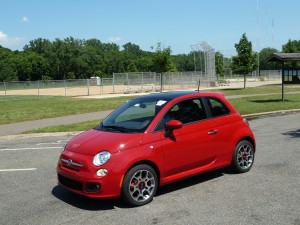

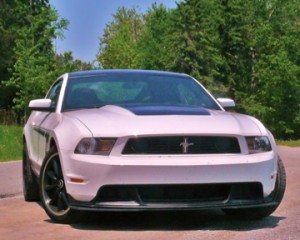
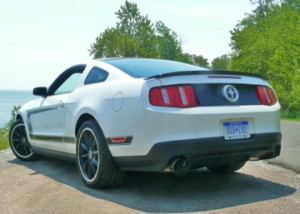
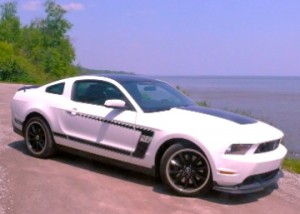

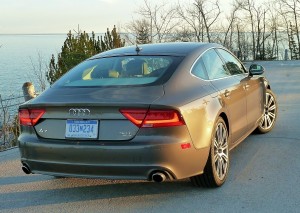
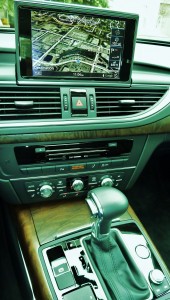
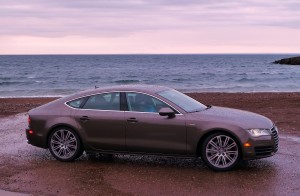
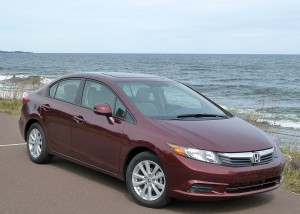
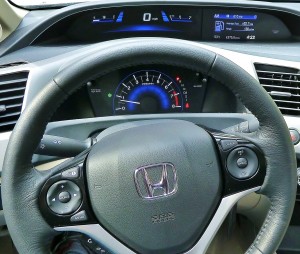

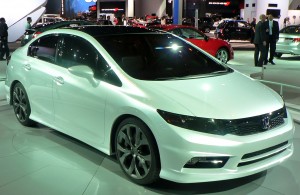
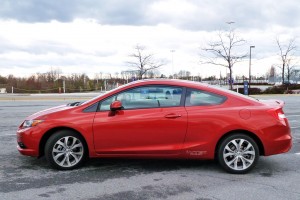
 John Gilbert is a lifetime Minnesotan and career journalist, specializing in cars and sports during and since spending 30 years at the Minneapolis Tribune, now the Star Tribune. More recently, he has continued translating the high-tech world of autos and sharing his passionate insights as a freelance writer/photographer/broadcaster. A member of the prestigious North American Car and Truck of the Year jury since 1993. John can be heard Monday-Friday from 9-11am on 610 KDAL(www.kdal610.com) on the "John Gilbert Show," and writes a column in the Duluth Reader.
John Gilbert is a lifetime Minnesotan and career journalist, specializing in cars and sports during and since spending 30 years at the Minneapolis Tribune, now the Star Tribune. More recently, he has continued translating the high-tech world of autos and sharing his passionate insights as a freelance writer/photographer/broadcaster. A member of the prestigious North American Car and Truck of the Year jury since 1993. John can be heard Monday-Friday from 9-11am on 610 KDAL(www.kdal610.com) on the "John Gilbert Show," and writes a column in the Duluth Reader.